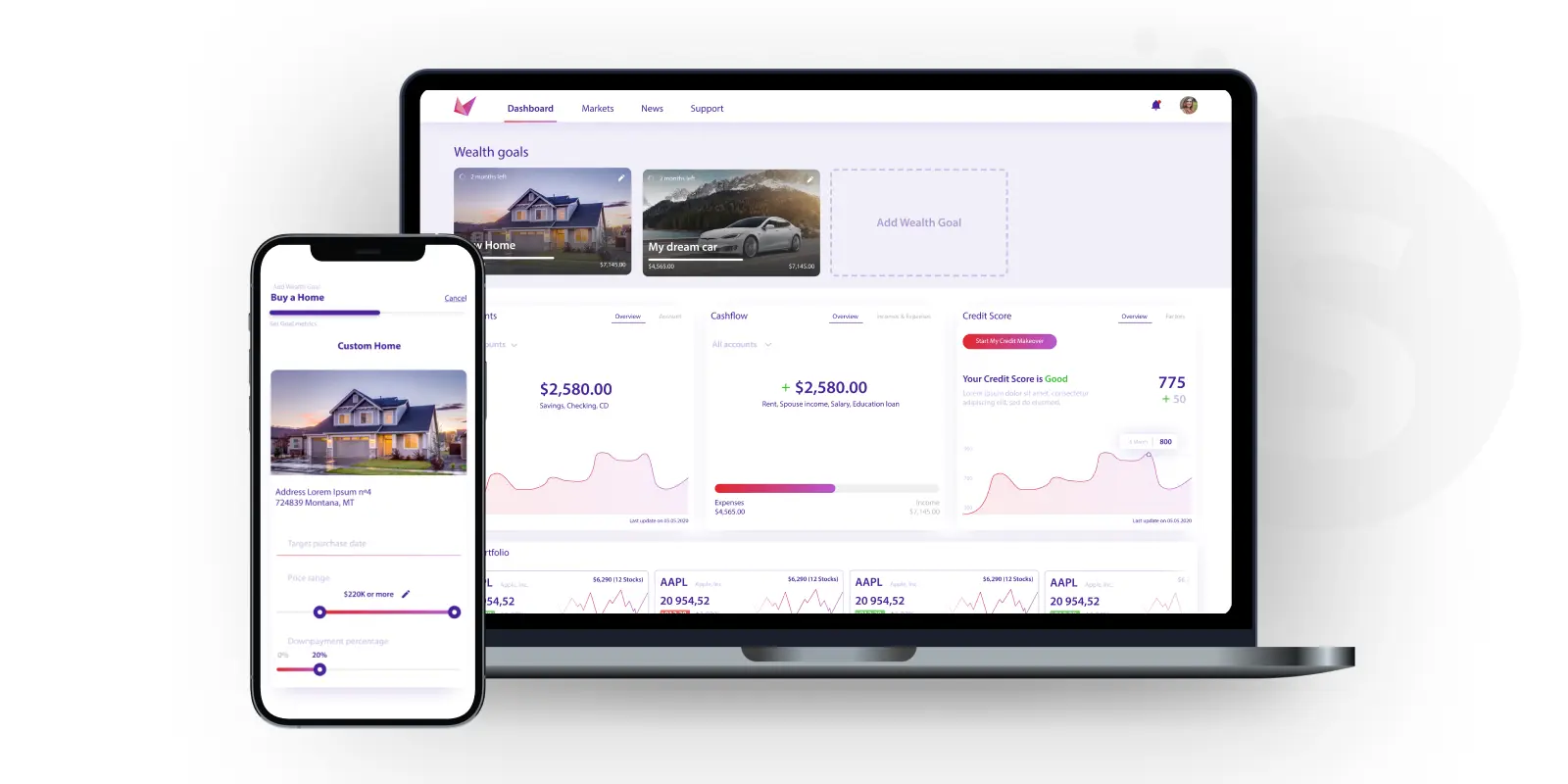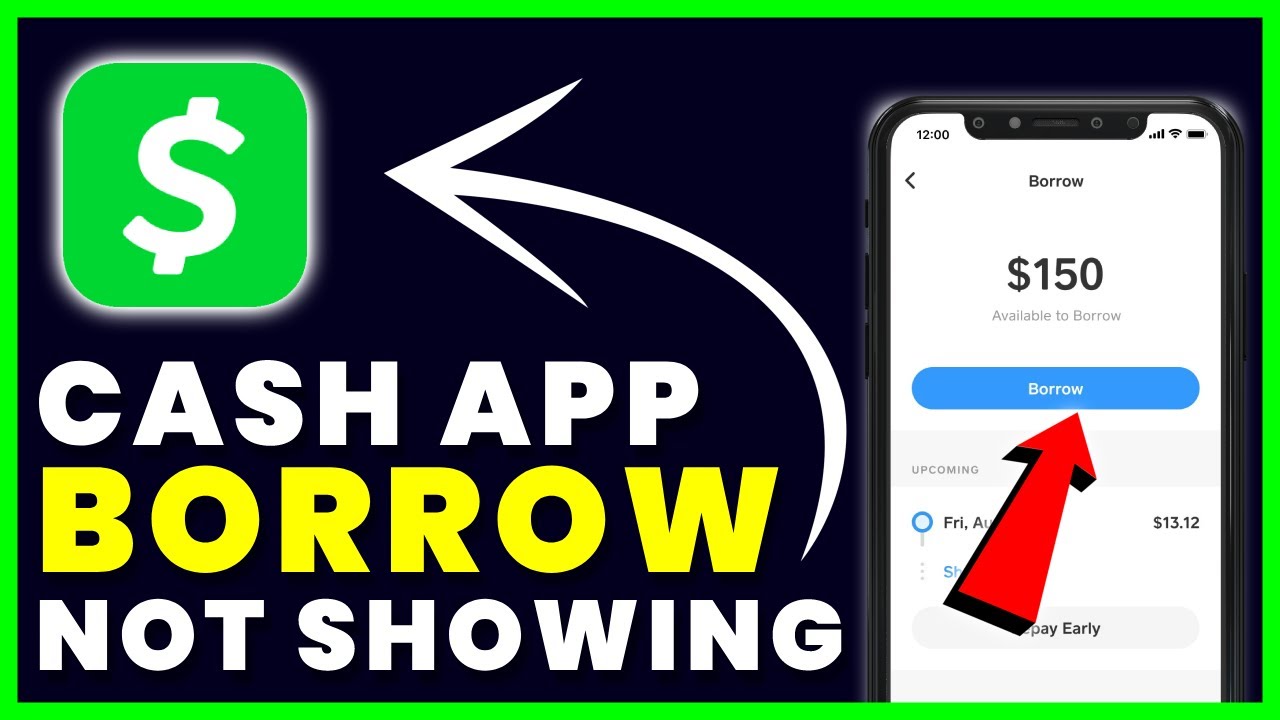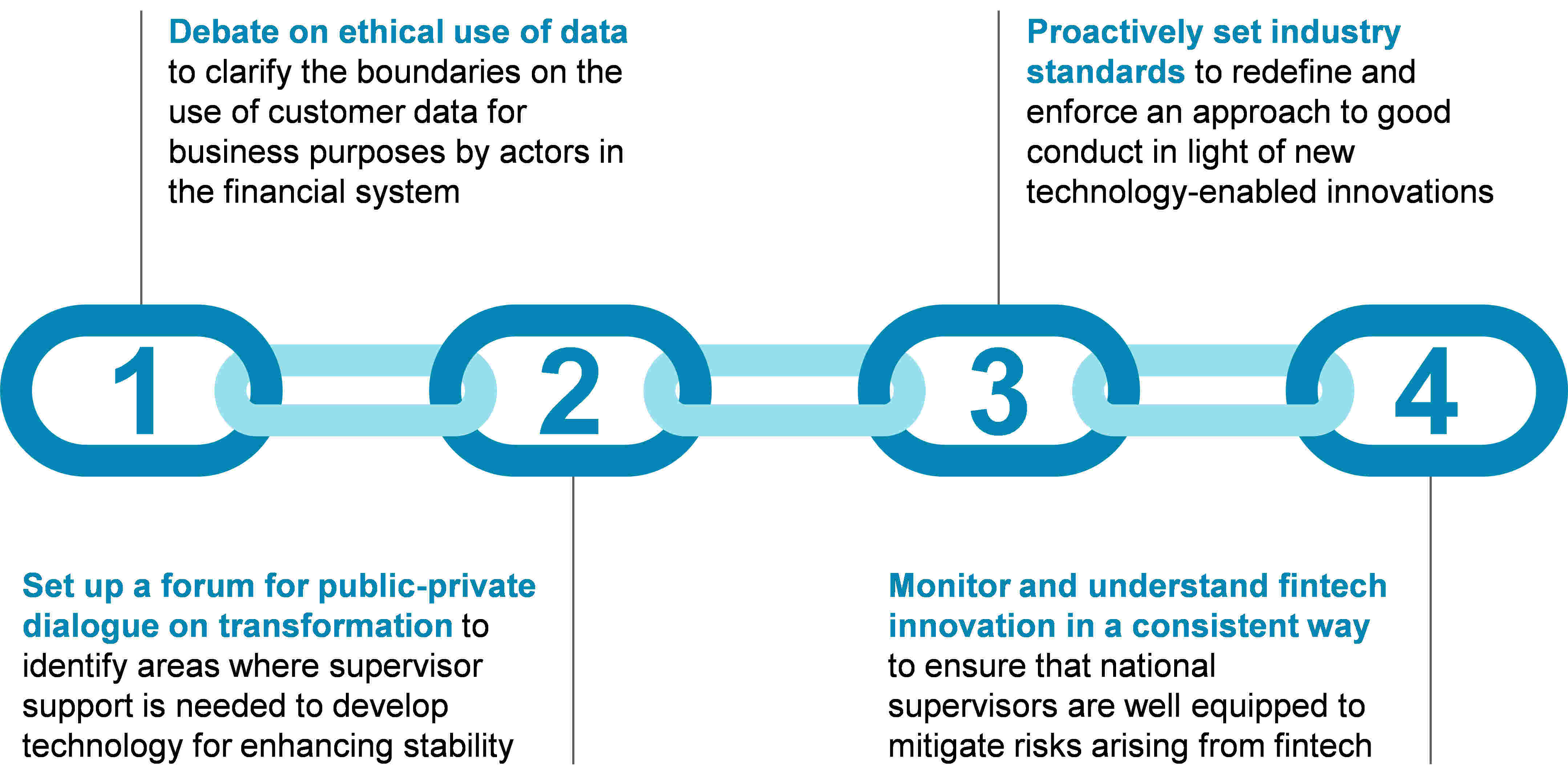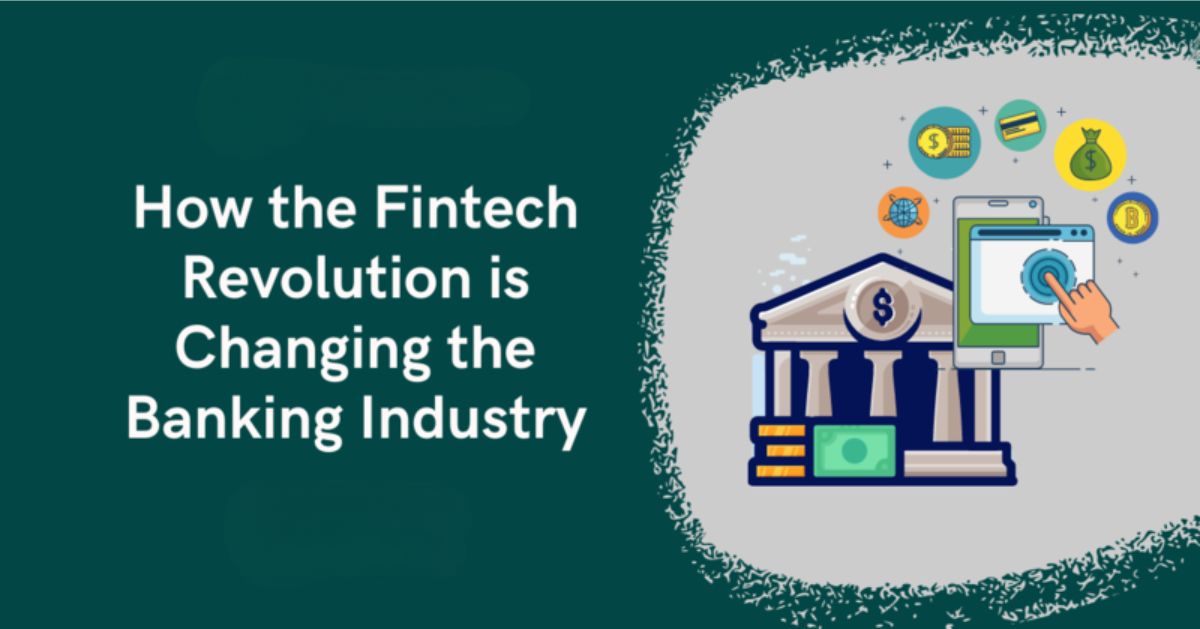Introduction
Welcome to the world of money lending mobile apps, where financial services are just a tap away. In today’s digital era, the demand for convenient and accessible lending platforms has skyrocketed, making it a lucrative market for entrepreneurs and businesses to tap into. If you’re looking to venture into this thriving industry, creating your own money lending mobile app can be a game-changer.
With a money lending app, users can borrow money, complete loan applications, and manage their finances seamlessly from the comfort of their smartphones. This innovative solution eliminates the need for traditional paperwork, long approval processes, and physical visits to a lending institution. It offers speed, convenience, and efficiency, attracting a wide range of users with varying financial needs.
However, developing a successful money lending mobile app involves careful planning, meticulous design, and robust development. This article will guide you through the essential steps to create your own money lending app that not only meets the requirements of your target audience but also outshines your competitors in the market.
From understanding the dynamics of the money lending market to designing an intuitive user interface, integrating payment gateways, and implementing advanced security measures, we’ll cover everything you need to know to build a top-notch money lending mobile app that fulfills the financial needs of your users. So, without further ado, let’s dive into the captivating world of money lending app development.
Understanding the Money Lending Market
Before embarking on your money lending app journey, it’s crucial to gain a deep understanding of the market landscape. The financial industry has evolved significantly, and various players have emerged in the lending space. To create a successful money lending app, you need to identify the gaps and opportunities that exist in the market.
Start by conducting thorough market research to assess the demand for money lending services. Analyze the current trends, consumer behavior, and the competition in the market. Understand the challenges faced by borrowers and lenders and identify areas where your app can offer a unique value proposition.
Consider the different types of money lending available in the market, such as personal loans, business loans, payday loans, and peer-to-peer lending. Each type caters to a specific set of users with distinct financial needs. Determine which segment you want to target with your app and tailor your offerings accordingly.
Additionally, regulatory compliance is a critical aspect of the money lending industry. Understand the legal requirements and licensing procedures necessary to operate as a money lending platform in your target market. Compliance with these regulations not only ensures the legality of your app but also promotes trust and credibility among your users.
Moreover, it’s important to be aware of the risks and challenges associated with money lending. Credit risk assessment, fraud prevention, and data security are paramount considerations when dealing with financial transactions. Addressing these challenges and implementing robust risk management measures will contribute to the success and sustainability of your money lending app.
By thoroughly understanding the money lending market, you’ll be equipped with the knowledge necessary to create a unique app that provides value to both borrowers and lenders. It’s essential to keep an eye on market dynamics and adapt your app’s features and functionalities to meet the evolving needs of your target audience.
Identifying the Purpose and Target Audience for Your App
Defining the purpose and target audience of your money lending app is a crucial step in its development process. Clearly understanding these aspects will help you tailor your app’s features and functionalities to meet the specific needs of your users, ensuring a successful and engaging user experience.
Start by determining the primary purpose of your app. Are you targeting individuals seeking personal loans? Small businesses in need of financing? Or perhaps you aim to connect borrowers and lenders in a peer-to-peer lending platform? Identifying the purpose of your app will guide its overall design and functionality.
Once you’ve defined the purpose, it’s time to identify your target audience. Who are the potential users of your app? Are they young professionals looking for quick short-term loans? Small business owners seeking hassle-free financing options? Or individuals with less-than-perfect credit scores searching for alternative lending solutions? Understanding your target audience’s demographics, behaviors, and preferences will help you refine your app’s features and marketing strategies.
Conduct thorough market research and utilize analytics tools to gather insights about your target audience. Look into their income levels, spending habits, and financial goals. Understand the challenges they face when it comes to borrowing money, such as lengthy approval processes or strict credit score requirements. These insights will enable you to design a seamless user experience tailored to their specific needs.
Consider integrating features that resonate with your target audience. For example, if you’re targeting small businesses, your app could have tools for managing cash flow, generating financial reports, and connecting with potential investors. Alternatively, if your focus is on personal loans, your app could provide a user-friendly loan application process, options for flexible repayment plans, and educational resources for financial literacy.
By narrowing down your app’s purpose and target audience, you can create a focused and customized user experience. This targeted approach will not only attract more users but also increase user engagement and satisfaction with your app. Remember, understanding your users and delivering value to them is key to the long-term success of your money lending app.
Researching Existing Money Lending Apps
As part of the app development process, it’s crucial to research existing money lending apps to gain insights into their strengths, weaknesses, and overall user experience. Studying your competitors will not only help you identify potential gaps in the market but also provide inspiration for innovative features and functionalities.
Start by identifying the leading money lending apps in your target market. Look for apps that cater to a similar target audience or offer similar types of loans. Analyze their user reviews, ratings, and feedback to understand what users appreciate and what they find lacking in these apps.
Scrutinize the key features and functionalities offered by these apps. Explore their loan application processes, interest rate calculators, repayment options, and customer support services. Pay attention to the user interface and user experience, noting any pain points or areas for improvement.
While researching existing money lending apps, also consider the technological aspects. Assess the technologies used for the app development, the overall performance, and the integration of third-party services such as payment gateways and credit scoring systems.
Identify any unique selling points (USPs) that successful money lending apps have incorporated. These can be features that provide a competitive advantage, such as quick loan approvals, personalized loan recommendations, or streamlined document submission processes. Understanding these USPs will help you differentiate your app and provide value to your target audience.
Moreover, don’t overlook the marketing and user acquisition strategies employed by these apps. Investigate their social media presence, digital advertising initiatives, and partnerships with influencers or financial institutions. Assess their approach to user onboarding and retention to gain insights into effective strategies for attracting and retaining app users.
By thoroughly researching existing money lending apps, you’ll be better equipped to develop an innovative and user-centric app. This research will enable you to identify gaps in the market, learn from competitors’ strengths and weaknesses, and create a unique value proposition that appeals to your target audience. Remember, a deep understanding of the competitive landscape is crucial for the success of your money lending app.
Defining the Features and Functionality of Your App
Defining the features and functionality of your money lending app is a critical step in creating a seamless and user-friendly experience for your users. By offering the right set of features, you can attract and retain customers, differentiate your app from competitors, and effectively meet the financial needs of your target audience.
Start by identifying the core features that your money lending app must-have. These include user registration and authentication, loan application submission, credit scoring and risk assessment, loan approval and disbursement, and repayment management. These features form the foundation of your app’s functionality and provide essential services to your users.
Next, consider additional features that can enhance the user experience and provide added value. For example, you might explore options for loan calculators, allowing users to estimate loan amounts, interest rates, and repayment timelines. Implementing push notifications can keep users updated on loan statuses, repayment reminders, and promotional offers.
Integrating a secure messaging system can facilitate communication between borrowers and lenders, ensuring clarity and transparency throughout the loan process. Consider incorporating financial education resources, such as articles, videos, or tutorials, to empower users with knowledge and improve their financial literacy.
Personalization is also crucial. Offering personalized loan recommendations based on user profiles, credit history, and financial goals can enhance the user experience and increase the chances of loan approval. Implementing a user-friendly dashboard can allow users to track their loan application progress, manage repayments, and access relevant account information.
Furthermore, integrating third-party services can enhance the functionality of your app. Consider partnering with payment gateways to provide seamless and secure payment options. You might also collaborate with credit bureaus to obtain credit scores and facilitate accurate credit assessments.
Remember, as you define the features and functionalities of your money lending app, usability and simplicity should be prioritized. Provide a clean and intuitive user interface that makes it easy for users to navigate through the app and access the features they need. Avoid cluttering the app with unnecessary features that may confuse or overwhelm users.
By defining the right set of features and functionality, you can create a money lending app that meets the financial needs of your users while providing a delightful and hassle-free user experience. Regularly gather user feedback and iterate on your app’s features to continuously improve and stay ahead of the evolving needs of your target audience.
Designing the User Interface and User Experience
Designing an intuitive user interface (UI) and delivering a seamless user experience (UX) are key aspects of creating a successful money lending app. A well-designed UI/UX not only attracts users but also increases engagement and satisfaction, leading to higher app retention rates and customer loyalty.
Start by focusing on the visual elements of your app’s UI. Use a clean and modern design that reflects your brand identity and appeals to your target audience. Pay attention to color schemes, typography, and iconography to create a visually pleasing and cohesive interface.
Simplify the onboarding process by providing clear instructions and guiding users through each step of registration. Implement intuitive forms with minimal fields, offer autofill capabilities, and validate user inputs in real-time to minimize errors and frustration.
Ensure that the navigation within your app is seamless and easy to understand. Use clear and concise labels for buttons and menu items, and organize information in a logical hierarchy. Implement breadcrumbs or a progress indicator to help users track their progress within the app, especially during lengthy loan application processes.
Focus on creating a user-centric experience by anticipating user needs and providing relevant information and actions at the right time. For instance, display personalized loan recommendations based on user profiles and financial goals, provide clear explanations of loan terms and conditions, and offer real-time support options for users who have questions or need assistance.
To enhance the overall UX, optimize the performance and responsiveness of your app. Minimize loading times, implement smooth transitions, and ensure that your app works seamlessly across different devices and screen sizes. Conduct comprehensive testing to identify and resolve any usability issues or bugs.
Consider incorporating interactive elements and gamification techniques to make your app more engaging. For example, you could reward users for completing loan applications or making timely repayments through a loyalty or point system. Implement push notifications or in-app alerts to provide updates and motivate users to take action.
Finally, accessibility is a crucial aspect of designing your money lending app. Ensure that your app meets the Web Content Accessibility Guidelines (WCAG) to accommodate users with visual or hearing impairments or other disabilities. Provide options for adjustable font sizes, support for screen readers, and high contrast modes.
By focusing on designing a user-friendly UI and delivering a seamless UX, you can create a money lending app that users find visually appealing, easy to navigate, and enjoyable to use. Continuously gather user feedback and iterate on your design to optimize the UI/UX and provide an outstanding experience for your users.
Choosing the Right Technology Stack for Development
Choosing the right technology stack is crucial for the development of your money lending app. A technology stack refers to the combination of programming languages, frameworks, libraries, and tools that will be used to build your app. Selecting a robust and suitable technology stack will ensure the scalability, performance, and security of your app.
Start by considering the backend technologies that will power your app’s server-side logic and data storage. Popular options for backend development include Python, Ruby on Rails, Node.js, and Java. Each of these languages has its own set of frameworks and libraries that offer different strengths, so choose the one that aligns with your development team’s expertise and scalability requirements.
When it comes to frontend development, HTML, CSS, and JavaScript are the foundation. For a more interactive user experience, consider using frontend frameworks like React, Angular, or Vue.js. These frameworks provide a robust structure for building dynamic and responsive interfaces.
Additionally, consider the database management system (DBMS) for storing, retrieving, and managing your app’s data. Options include relational databases like MySQL or PostgreSQL, or NoSQL databases like MongoDB or Firebase. The choice will depend on the requirements of your app, such as data consistency, scalability, and ease of development.
Integrating payment gateways and financial APIs is essential for a money lending app. Choose a technology stack that offers seamless integration with popular payment gateways like Stripe, PayPal, or Braintree. Ensure that the technology stack supports APIs for credit scoring services, identity verification, and other financial data providers that you might want to utilize.
Consider the scalability and performance requirements of your app. Research cloud service providers such as AWS, Google Cloud, or Microsoft Azure to host your app’s infrastructure. These providers offer scalable and reliable hosting solutions, as well as ancillary services like content delivery networks (CDNs) and caching mechanisms.
Lastly, prioritize security throughout your app’s development process. Choose a technology stack that offers robust security features and encryption protocols. Implement best practices such as secure user authentication and authorization, secure data transmission, and protection against common web vulnerabilities.
Keep in mind that the selection of the technology stack should align with your development team’s expertise. Consider the availability of resources, community support, and documentation for the chosen technologies. This will facilitate smooth development, debugging, and maintenance processes.
By carefully choosing the right technology stack for development, you can ensure the scalability, performance, and security of your money lending app. A well-considered technology stack will provide a solid foundation for your app’s architecture and contribute to its success in the long run.
Creating a Secure and Reliable Backend System
Creating a secure and reliable backend system is essential for the success of your money lending app. The backend system handles the core functionality of the app, including user authentication, data storage, loan processing, and integration with external services. Implementing robust security measures and ensuring reliable performance is crucial to protect user data, prevent fraudulent activities, and provide a smooth user experience.
Start by implementing secure user authentication mechanisms. Utilize industry-standard protocols such as OAuth, JWT (JSON Web Tokens), or secure user sessions to authenticate user logins and protect sensitive user information. Implement password hashing and salting techniques to ensure that user credentials are securely stored.
Employ strict access controls and authorization mechanisms to protect user data. Use role-based access control (RBAC) to define user permissions and access levels within your backend system. This prevents unauthorized access to sensitive user information and ensures that each user can only access the data that they are authorized to view or modify.
Implement encryption techniques to protect data in transit and at rest. Use SSL/TLS protocols to encrypt data transmissions between the client app and your backend servers. Encrypt sensitive data, such as user personal and financial information, when storing it in the database to prevent unauthorized access in case of a breach.
Implement measures to prevent common web vulnerabilities, such as cross-site scripting (XSS) and SQL injection attacks. Use input validation and sanitization techniques to prevent malicious code from being executed or injected into your backend system. Employ parameterized queries and prepared statements to prevent SQL injection attacks.
Regularly monitor and log activities within your backend system. Implement logging mechanisms to capture and analyze user actions, system errors, and security-related events. This helps in identifying and responding to potential security threats or system vulnerabilities.
Ensure reliable performance and scalability by utilizing load-balancing techniques, caching mechanisms, and optimizing database queries. Load balancing enables the distribution of incoming traffic across multiple servers, preventing any single server from becoming a performance bottleneck. Implement caching techniques to store frequently accessed data in memory, reducing the load on backend servers and improving response times.
Regularly backup your data to prevent loss in case of system failures or unforeseen events. Implement disaster recovery strategies to ensure the continuity of your backend system in case of server failures, natural disasters, or other disruptive events. Test and validate your backup and recovery processes to ensure their effectiveness.
Lastly, conduct routine security audits and vulnerability assessments to identify and address potential weaknesses in your backend system. Stay up to date with the latest security standards and best practices, and regularly patch and update your software systems to protect against known vulnerabilities.
By prioritizing security and reliability in your backend system, you can instill trust in your users and create a solid foundation for your money lending app. Remember, security is an ongoing process that requires constant vigilance and proactive measures to safeguard user data and maintain a trustworthy platform.
Implementing the Money Lending and Loan Processing Logic
Implementing the money lending and loan processing logic is a critical aspect of your money lending app’s backend development. This logic encompasses the core functionality of evaluating loan applications, processing loan requests, and managing the repayment process. By effectively implementing this logic, you can create a seamless and efficient user experience for borrowers and lenders.
Start by defining the criteria and algorithms for evaluating loan applications. Consider factors such as credit scores, income verification, employment history, and debt-to-income ratios. Create an intelligent decision-making system that analyzes these factors and determines the loan eligibility and applicable interest rates for each applicant.
Implement a robust loan management system that tracks and monitors the status of loan applications. This system should efficiently handle borrower documentation, communication, and user notifications. Provide users with a transparent view of their loan application progress, allowing them to track their status and receive updates throughout the process.
Create a secure and seamless loan disbursement process. Implement mechanisms for verifying borrower identities and bank account details to ensure that funds are transferred to the correct recipient. Make use of secure payment gateways to process loan disbursements quickly and securely.
Alongside loan disbursement, establish a reliable and flexible repayment management system. Allow users to set up automated payments, schedule reminders for repayment dates, and provide multiple payment options to accommodate their preferences. Implement features that enable users to view their repayment history, outstanding balances, and interest details.
Consider implementing grace periods and penalty systems for late or missed payments. Implement options for borrowers to request payment extensions or adjustments if they encounter financial difficulties. Ensure that your backend system handles these adjustments accurately and updates the loan repayment schedule accordingly.
Develop internal processes that enable effective communication between borrowers and lenders. Implement a secure messaging system for borrowers to inquire about loan details or to request modifications to their loan terms. Facilitate seamless communication between lenders and borrowers to address any queries or concerns promptly.
Implement robust security measures to protect user data and financial transactions within your loan processing logic. Utilize encryption techniques to safeguard sensitive information such as bank account numbers and personal identification details. Implement fraud detection mechanisms to identify suspicious activities and prevent fraudulent loan applications.
Ensure that your loan processing logic complies with legal regulations and data protection policies. Familiarize yourself with the relevant financial regulations in your target market and ensure that your backend system adheres to these guidelines. Implement measures to protect user privacy, including obtaining explicit consent for data collection and processing.
Finally, conduct extensive testing and quality assurance of your loan processing logic. Simulate various scenarios to ensure that your backend system can handle different loan types, repayment schedules, and user interactions. Perform stress testing to determine the system’s performance under high load conditions.
By effectively implementing the money lending and loan processing logic, you can build a robust backend system that delivers a seamless loan application and repayment experience. Prioritize security, data protection, and compliance throughout the development process, ensuring trust and confidence in your money lending app.
Integrating Payment Gateways and Financial APIs
Integrating payment gateways and financial APIs is a critical component of your money lending app’s functionality. These integrations allow you to facilitate secure and seamless financial transactions, enhance user experience, and provide essential services to borrowers and lenders. By effectively integrating payment gateways and financial APIs, you can ensure smooth loan disbursements, repayments, and financial data processing.
Start by identifying the payment gateways that align with your app’s requirements and target market. Popular options such as Stripe, PayPal, Braintree, or custom payment gateway solutions offer secure and convenient payment processing services. Consider factors such as transaction fees, supported currencies, and the geographies they serve.
Ensure that your chosen payment gateway provides a robust set of APIs for integration. These APIs should allow you to initiate transactions, retrieve payment statuses, and handle payment failures or cancellations. Implement secure tokenization techniques to protect sensitive card data and comply with PCI-DSS (Payment Card Industry Data Security Standard) requirements.
Integrate financial APIs to enhance your app’s functionalities and provide valuable services to users. These APIs can include credit scoring services, identity verification, automated income verification, bank account validation, or loan origination services. Select APIs that align with your app’s purpose and target audience, and ensure that they offer reliable and secure data retrieval mechanisms.
Implement processes to securely store and manage user financial data. Ensure that sensitive data such as bank account numbers and credit card details are encrypted using industry-standard encryption algorithms. Comply with relevant data protection regulations, such as the General Data Protection Regulation (GDPR), to safeguard user privacy.
Consider implementing two-factor authentication (2FA) for payment-related activities to provide an extra layer of security. This can involve verifying transactions through SMS, email, or authenticator app codes, providing an additional level of identity verification for users.
Implement mechanisms to handle and resolve payment disputes or chargebacks. Establish clear refund policies and ensure that your backend system can handle refund requests and process reimbursements promptly. Monitor payment statuses and implement automated processes for failed or cancelled payments.
Test the integration of payment gateways and financial APIs thoroughly before going live. Conduct end-to-end testing to ensure that transactions are processed securely and accurately. Simulate different scenarios, such as failed transactions or network connectivity issues, to verify the resilience and stability of your integrations.
Maintain regular updates and monitoring of your payment gateway and financial API integrations. Stay informed about any changes or updates from the providers, and ensure that your app remains compatible and up-to-date with their latest versions. Monitoring transaction logs and tracking key metrics will help you identify any potential issues and improve the overall payment experience for your users.
By seamlessly integrating payment gateways and financial APIs, you can provide a reliable and convenient payment experience for borrowers and lenders using your money lending app. Prioritize security, data protection, and compliance to ensure the trust and confidence of your users when conducting financial transactions through your app.
Testing and Quality Assurance of Your App
Testing and quality assurance play a crucial role in the development process of your money lending app. Thorough testing ensures that your app performs as expected, meets user requirements, and operates flawlessly across different devices and scenarios. By investing time and effort in testing, you can deliver a reliable and high-quality app to your users.
Start by developing a comprehensive test plan that covers different aspects of your app’s functionality. This includes functional testing to verify that all features and functionalities work as intended, usability testing to assess the app’s user-friendliness and ease of navigation, performance testing to evaluate the app’s responsiveness under various load conditions, and security testing to identify and address vulnerabilities.
Conduct both manual and automated testing to ensure a thorough evaluation of your app. Manual testing involves real-time testing by human testers who can identify user experience issues, edge cases, and system compatibility concerns. Automated testing involves using tools and scripts to perform repetitive tasks and validate app functionalities, ensuring faster and more efficient testing.
Perform regression testing to ensure that updates or modifications to your app do not introduce new bugs or issues. Regularly run test suites to confirm that previously resolved issues remain resolved and that new features do not interfere with existing functionalities. Regression testing helps maintain the app’s stability and reliability over time.
Utilize emulators and real devices for testing your app on different platforms, screen sizes, and operating systems. This ensures that your app functions consistently and as expected across a wide range of devices that your target audience may be using. Test different network conditions and consider offline scenarios to assess the app’s behavior in various environments.
Implement user acceptance testing (UAT) to gain feedback from real users before launching your app. Involve a group of beta testers or select users who can provide valuable insights and suggestions. Their feedback will help identify any usability issues, bugs, or areas for improvement that may have been overlooked during development.
Establish a bug tracking and reporting system to document and monitor reported issues. Prioritize and address critical or high-impact bugs promptly and maintain clear communication with your testing team or beta users to ensure that no issues go unnoticed or unresolved.
Monitor app performance, stability, and response times using analytics and monitoring tools. Set up alerts and notifications to proactively identify and address any performance bottlenecks or system failures. Regularly review crash logs, server logs, and error logs to identify and resolve any recurring issues.
Consider conducting security penetration testing to assess the vulnerability of your app to malicious attacks. Work with security professionals to identify potential weaknesses in your app’s infrastructure, authentication mechanisms, and data encryption processes. Implement security patches and fixes to address any identified vulnerabilities.
By prioritizing testing and quality assurance, you can ensure that your money lending app delivers a reliable and consistent user experience. Continuously evaluating, refining, and improving your app based on feedback and testing results will contribute to its long-term success and user satisfaction.
Launching and Deploying Your Money Lending Mobile App
Launching and deploying your money lending mobile app is an exciting milestone in the development process. This stage involves the final preparations to make your app available to your target audience. By following a well-planned launch strategy and implementing effective deployment techniques, you can ensure a successful app launch and attract users to your platform.
Start by thoroughly testing your app on different devices, operating systems, and network conditions to ensure it functions seamlessly. Address any bugs, performance issues, or usability concerns identified during testing to deliver a stable and reliable app to your users.
Create app store accounts and prepare all the necessary assets such as app icons, screenshots, descriptions, and promotional materials. Comply with the guidelines and requirements of major app stores, such as Apple App Store and Google Play Store, to ensure a smooth submission and approval process.
Consider conducting pre-launch marketing activities to build anticipation and create buzz around your app. Utilize social media platforms, email newsletters, blog posts, and press releases to generate excitement. Offer early access to select users or beta testers to gather feedback and testimonials that can be used for marketing purposes.
Create a dedicated landing page or website for your app, providing information about its features, benefits, and how users can get started. Optimize the landing page for search engines to improve its visibility and reach a wider audience. Include clear call-to-action buttons or links for users to download and install your app.
Develop a comprehensive marketing plan to promote your app after launch. Utilize various channels such as social media advertising, search engine marketing, content marketing, and influencer partnerships to reach your target audience effectively. Encourage users to leave reviews and ratings on app stores, as positive feedback can boost your app’s visibility and credibility.
Monitor user feedback and engagement after the launch. Regularly check app store reviews, support emails, and social media mentions to understand users’ experiences and address any concerns or issues promptly. Incorporate user feedback into future updates and enhancements to continuously improve your app’s performance and user satisfaction.
Implement analytics tools to track key performance indicators (KPIs) such as app downloads, user retention, conversion rates, and revenue generated. Analyze the data regularly to gain insights into user behavior and understand how to optimize your app for better results.
Continue to update and enhance your app based on user feedback, industry trends, and emerging technologies. Release regular updates with new features, bug fixes, and improvements to keep users engaged and demonstrate your commitment to providing a top-notch user experience.
Ensure that your app remains compliant with relevant laws and regulations, such as data protection and financial regulations. Stay updated on changes in the legal landscape and implement necessary changes to maintain compliance.
Finally, establish strong customer support channels to assist users with any queries or issues they may face. Offer multiple channels for support, including email, live chat, or a dedicated support portal within your app. Provide timely and helpful responses to foster a positive relationship with your users.
By following a well-executed launch and deployment plan, you can introduce your money lending app to the market successfully and attract users to your platform. Continuously monitor user feedback and engagement to further refine your app and deliver an exceptional experience to your users.
User Acquisition and Marketing Strategies
User acquisition and effective marketing strategies are crucial for the success of your money lending app. By implementing targeted marketing tactics, you can attract your target audience, increase app downloads, and ultimately, drive user engagement and conversions. Here are some strategies to consider:
Define your target audience and create user personas based on their demographics, behaviors, and interests. This will help you tailor your marketing messages and strategies to resonate with your intended users.
Optimize your app store presence by carefully crafting compelling app descriptions, using relevant keywords, and creating eye-catching app icons and screenshots. Make sure to highlight the unique features and benefits of your app to differentiate it from competitors.
Develop a content marketing strategy to establish thought leadership and attract potential users. Create blog posts, articles, or videos that offer insights into personal finance management, loan tips, or industry trends. Share this content on your app’s website, social media channels, and other relevant platforms to reach a wider audience.
Utilize social media platforms to build brand awareness and engage with your target audience. Share informative and engaging content, run targeted ad campaigns, and actively participate in relevant groups or discussions to establish your app as a trusted authority in the industry.
Consider influencer partnerships to reach your target audience more effectively. Collaborate with influencers who have a strong following and influence in the financial or personal finance space. They can promote your app and provide authentic testimonials to their audience, increasing brand visibility and credibility.
Implement search engine optimization (SEO) techniques to improve your app’s visibility in search engine results. Optimize your website and blog content with relevant keywords, create backlinks from reputable websites, and ensure your app’s landing page is optimized for search engine algorithms.
Explore paid advertising options such as Google Ads, social media ads, or display ads to target specific audience segments and boost app visibility. Conduct thorough market research to select the most effective advertising channels and continuously monitor and optimize your ad campaigns for maximum results.
Encourage users to refer your app to others by implementing a referral program. Offer incentives or rewards to users who refer new users to your app. This can help drive organic growth and generate word-of-mouth marketing.
Collaborate with complementary businesses or financial institutions to cross-promote your app. Establish partnerships that offer mutual benefits, such as promoting their services within your app or co-hosting webinars or educational events.
Monitor app analytics to gain insights into user behavior, acquisition channels, and conversion rates. Utilize this data to optimize your marketing strategies and focus on channels that generate the highest user engagement and conversions.
Collect and leverage user reviews and testimonials to showcase the positive experiences of your app users. Positive reviews can foster trust and credibility and encourage potential users to download and use your app.
Regularly evaluate and refine your marketing strategies based on performance metrics and user feedback. Continuously experiment with new channels, messaging, or targeting approaches to stay ahead of the competition and reach a wider user base.
By implementing effective user acquisition and marketing strategies, you can generate awareness, attract your target audience, and drive app downloads for your money lending app. Consistently analyze and adapt your strategies based on user feedback and market trends to ensure long-term growth and success.
Monitoring and Analyzing User Feedback and App Performance
Monitoring and analyzing user feedback and app performance is crucial to the ongoing success and improvement of your money lending app. By actively listening to your users and analyzing their feedback, you can identify areas for improvement, address issues promptly, and provide an exceptional user experience. Here are some key strategies for monitoring and analyzing user feedback and app performance:
Implement feedback channels within your app, such as in-app surveys, ratings, and reviews. Encourage users to provide feedback on their experience, suggestions for improvement, or any issues they encounter. Regularly monitor this feedback and use it as a valuable source of insights.
Engage with users who provide feedback to understand their concerns, address issues, and gather more details about their experiences. Promptly respond to their queries or complaints, showing that you value their feedback and are committed to providing a positive user experience.
Establish a dedicated customer support team or process to handle user inquiries and issues. Collect information about common support requests and use this data to identify recurring problems or pain points that need to be resolved.
Utilize app analytics tools to track key performance indicators (KPIs) such as app downloads, user engagement, retention rates, and in-app activities. Analyze these metrics to gain insights into user behavior, identify trends, and make data-driven decisions for app improvements and optimizations.
Regularly review crash reports and error logs to identify and resolve any technical issues or bugs that may affect app performance. Addressing these issues promptly can prevent user frustration and optimize the overall user experience.
Segment your user base to gain insights into specific user groups and their behaviors. Analyze demographic data, usage patterns, and conversion rates across different segments to identify opportunities for targeting and personalization.
Monitor app store reviews and ratings to understand user sentiment and identify areas for improvement. Pay attention to both positive and negative reviews, looking for common themes or recurring feedback that can guide your app enhancements.
Set up user behavior tracking within your app to understand how users interact with various features. This data can help identify areas that users find confusing or challenging, allowing you to optimize the user experience and streamline workflows.
Utilize A/B testing to compare different versions or features of your app. Test variables such as user flows, design elements, or messaging to identify the variants that lead to better user engagement and conversion rates.
Conduct user surveys or interviews to gather qualitative feedback and deeper insights into user preferences and pain points. This firsthand feedback can provide valuable context and help validate quantitative data from analytics tools.
Regularly benchmark your app’s performance against industry standards and competitors. Assess how your app compares in terms of speed, usability, and features. Identify areas where you can differentiate and excel within your market.
Continuously iterate and improve your app based on user feedback and performance data. Prioritize enhancements that will have the most significant impact on the user experience and work iteratively to address user pain points and meet evolving user needs.
By monitoring and analyzing user feedback and app performance, you can gain valuable insights into user preferences, identify areas for improvement, and drive overall app success. This continuous feedback loop will help you deliver an exceptional user experience and stay ahead of the ever-changing demands of your users and the market.
Scaling and Updating Your Money Lending App
Scaling and updating your money lending app is essential to accommodate the growing user base, adapt to evolving market demands, and stay ahead of the competition. By implementing effective scaling strategies and regularly updating your app, you can ensure its performance, relevance, and long-term success. Here are key strategies for scaling and updating your money lending app:
Monitor app usage analytics and server performance to identify signs of increasing user demand. Look for spikes in user activity, increased load times, or server capacity constraints. Based on these insights, proactively plan and implement scaling techniques to ensure consistent app performance.
Implement horizontal scaling by adding more servers or cloud instances to distribute the growing workload. Load balancing techniques can help evenly distribute user requests and prevent any single server from becoming a bottleneck. This enables your app to handle increasing user traffic without compromising on performance.
Regularly review your app’s architecture and codebase to identify areas for optimization and enhancement. Simplify complex algorithms, refactor code for improved performance, and remove any redundant or obsolete features. These updates help streamline processes and improve overall efficiency.
Stay informed about emerging technologies and industry trends. Continuously evaluate your technology stack and consider adopting new tools, frameworks, or libraries that can enhance your app’s performance, security, or user experience. Implementing these updates keeps your app on the cutting edge and ensures it remains competitive in the market.
Regularly solicit user feedback and engagement to understand their needs and preferences. Take user suggestions and incorporate them into your app updates. Integrating user feedback shows that you value their input and helps you align your updates with their evolving expectations.
Release regular updates and new features to enhance user experience and address identified pain points. Implement bug fixes, security patches, and performance optimizations to maintain app stability and reliability. Ensure that your updates are thoroughly tested to prevent any unintended issues.
Utilize an agile development methodology to facilitate faster and more iterative updates. Break down larger features or enhancements into smaller, manageable tasks. This allows for quicker development cycles, feedback loops, and more timely updates to meet user demands and market trends.
Perform comprehensive testing of new features and updates to ensure they function as intended and do not introduce new issues. Conduct both functional and compatibility testing to confirm that the updates work seamlessly across different devices, operating systems, and network conditions.
Utilize app store release strategies such as phased rollouts or A/B testing to minimize the impact of any potential issues and validate updates with a subset of users before releasing to the wider audience. This approach allows you to gather feedback, address concerns, and make necessary adjustments before a full release.
Maintain clear and transparent communication with your users about the updates and improvements you make. Provide release notes or update summaries to inform users of new features or enhancements. Showcase the value and benefits that the updates bring to ensure user adoption and satisfaction.
Regularly evaluate your app’s performance and user feedback after updates to measure the impact of your efforts. Analyze user engagement metrics, conversion rates, and user sentiment to assess the effectiveness of your updates. Incorporate these insights into future iterations and updates, enhancing the overall user experience.
By proactively scaling and updating your money lending app, you ensure its continued relevance, performance, and competitiveness. Regular updates, bug fixes, and optimizations keep your app fresh, efficient, and aligned with user expectations, fostering user loyalty and driving continued success in the dynamic market of money lending apps.
Conclusion
Creating a money lending mobile app is a challenging but rewarding endeavor. By following the steps outlined in this guide, you can develop a successful app that meets the financial needs of your target audience while delivering a seamless and secure user experience.
It all starts with a deep understanding of the money lending market and identifying the specific purpose and target audience for your app. Thorough research, analyzing existing apps, and defining the features and functionality of your app set the foundation for its development.
Designing an intuitive user interface and user experience is crucial for attracting and retaining users. Choosing the right technology stack ensures the scalability, reliability, and security of your app’s backend system.
Implementing the money lending and loan processing logic, integrating payment gateways and financial APIs, and conducting thorough testing and quality assurance ensure that your app operates seamlessly.
Launching and deploying your money lending app, coupled with effective user acquisition and marketing strategies, is key to gaining visibility and attracting users.
Once your app is live, continuously monitoring and analyzing user feedback and app performance allows you to identify areas for improvement and optimize the user experience. Regularly updating and scaling your app keeps it relevant, competitive, and able to accommodate the growing needs of your user base.
In conclusion, building a money lending mobile app requires careful planning, meticulous development, and continuous improvement. By following the steps and strategies outlined in this guide, you can create a user-centric app that provides a seamless and secure platform for borrowers and lenders to engage in financial transactions. Stay agile, adapt to market demands, and prioritize the needs of your users to ensure the long-term success of your money lending app.

























